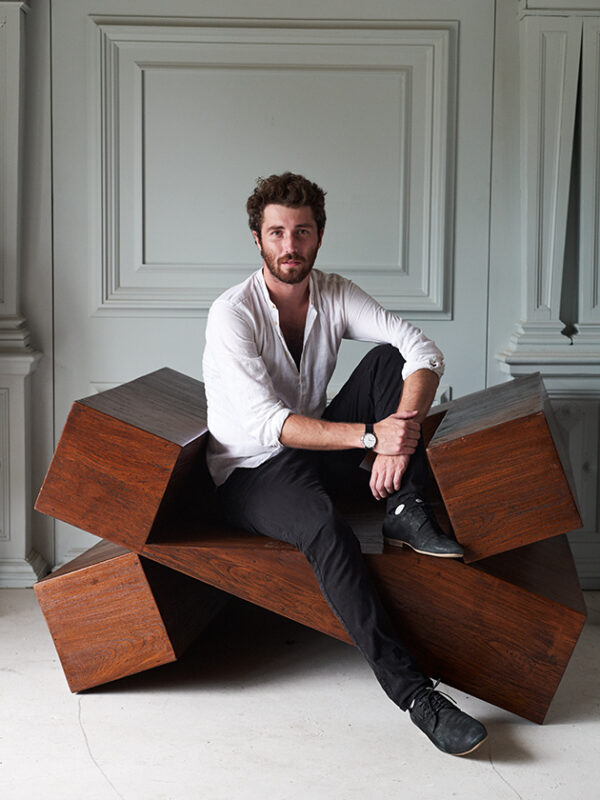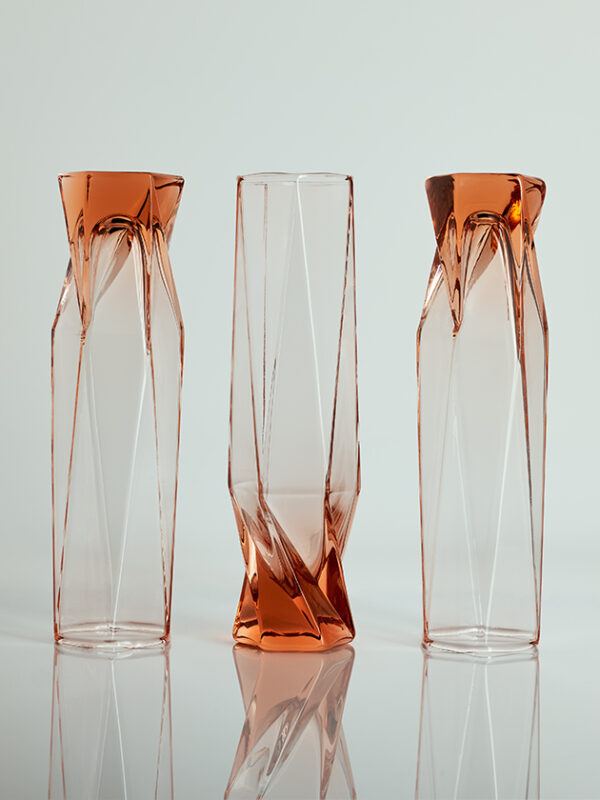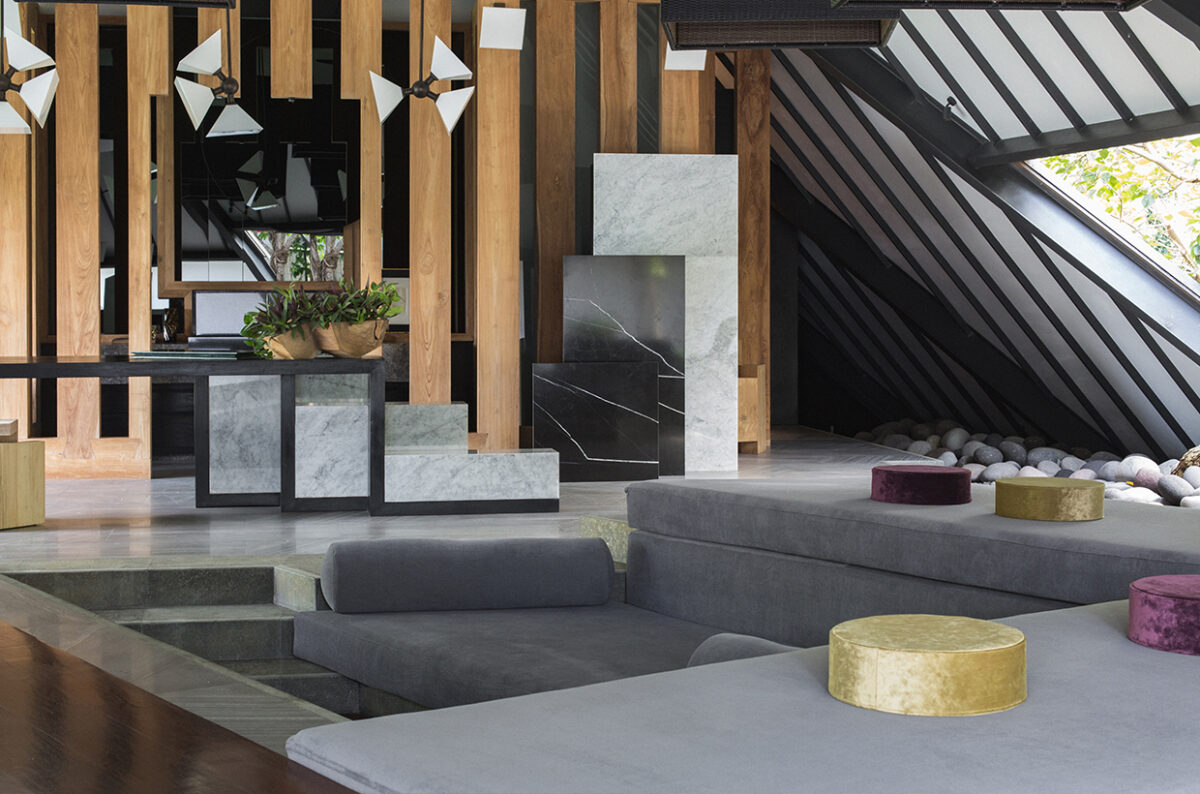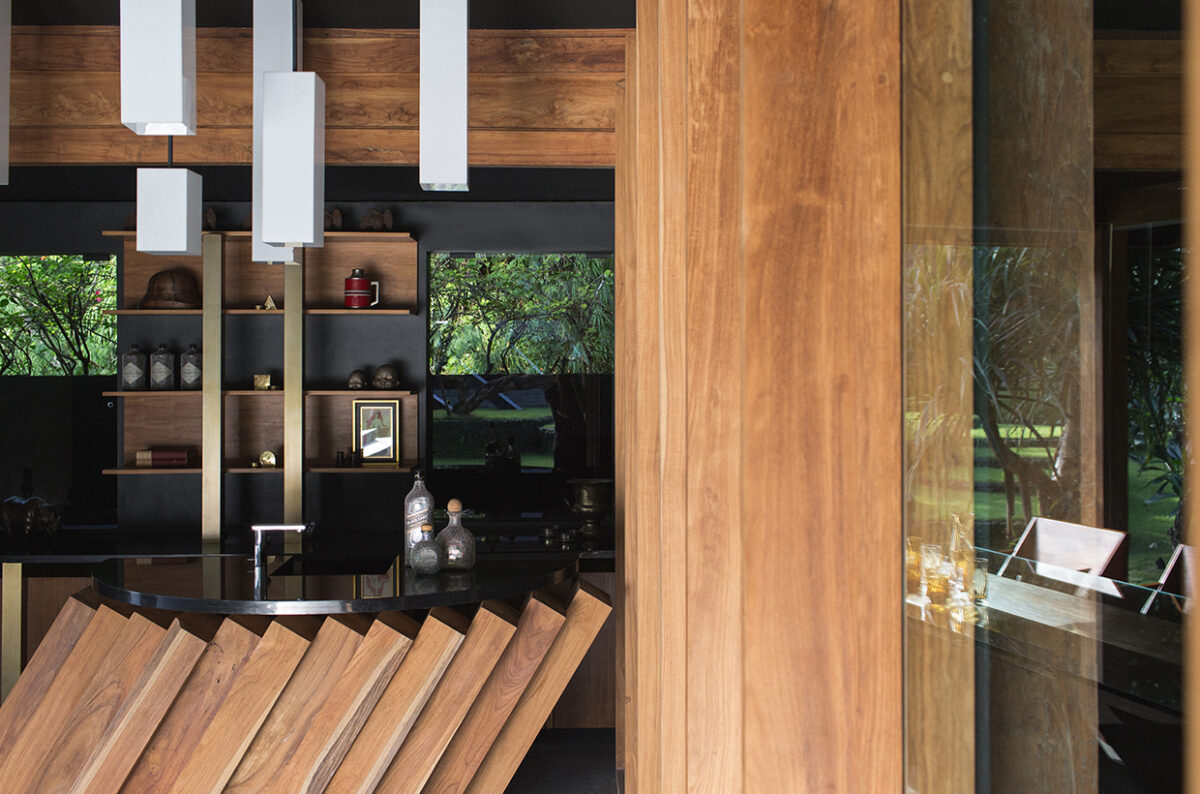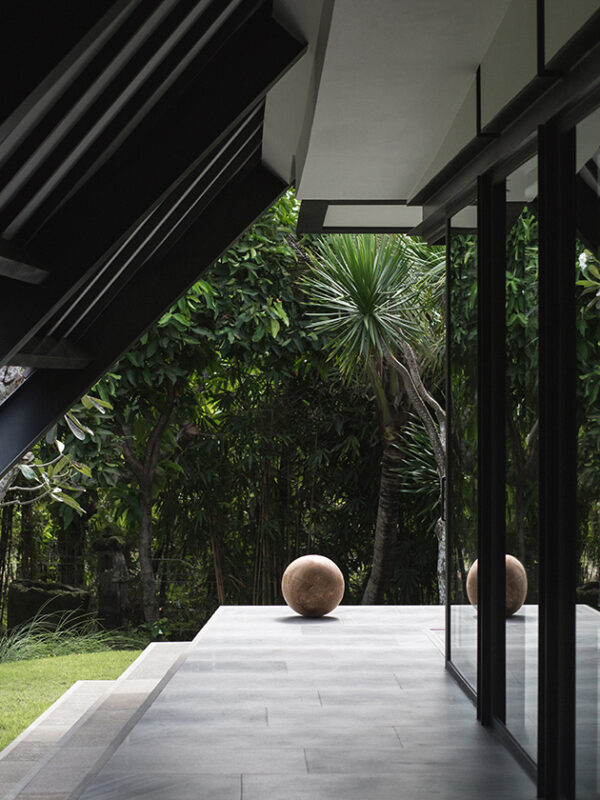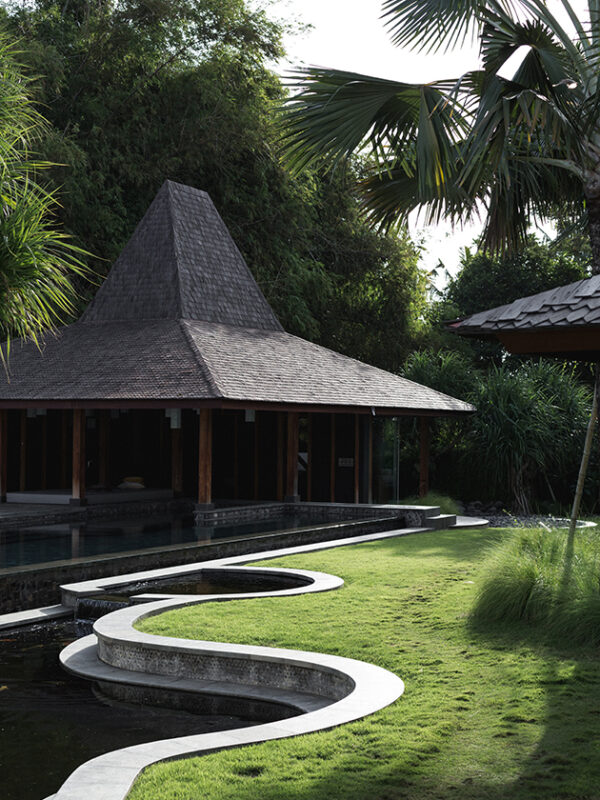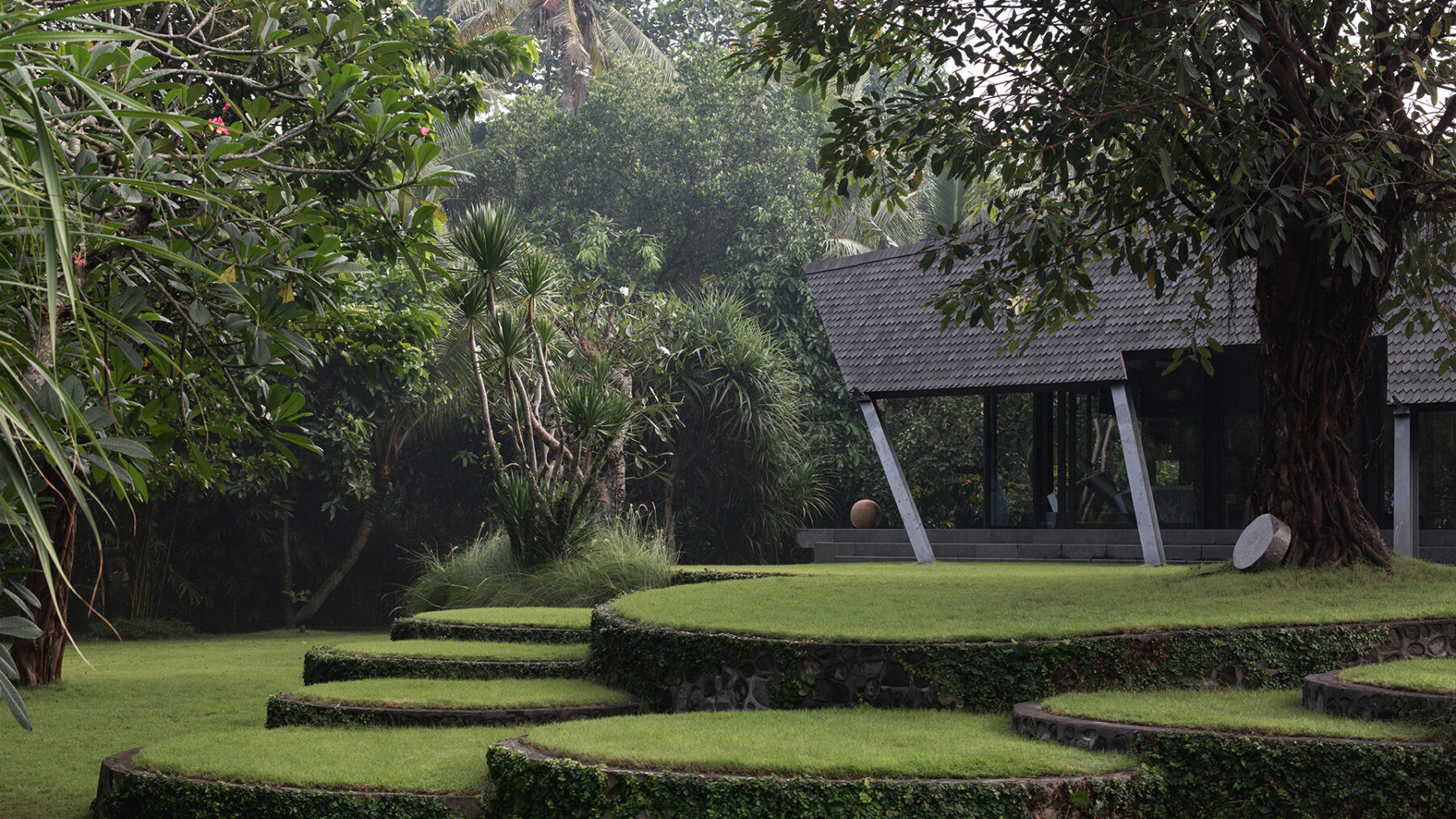The Nomad by Michaela Cordes | 21st March, 2023 | Personalities
He is regarded as a super-hot name in the design and fashion world right now: Maximilian Eicke, the man behind the brand Max ID NY. With his faceted Ghost glassware the furniture de- signer gained a dedicated following by the U.S. style set. Kendall Jenner is a fan, as is model Elsa Hosk, who both have posted his chic creations, much to the delight of their millions of followers. A success story that took many twists and turns – from Germany to Bali via New York.
When you see Maximilian Eicke for the first time, you could quite easily mistake him for Ben Affleck’s younger brother: tall, tousled brown curls, casual clothes and a winning smile. “Hi, how’s it going?” he says smiling, extending his hand. We have arrived at his design studio and showroom in Sag Harbor in the Hamptons, a good two hours’ drive from Manhattan. This is where Maximil- ian Eicke went to school after moving to the U.S. from Düsseldorf with his parents and sister in 1998. At first glance, it looks idyllic: carefully manicured box hedges, vast green meadows, delightful cottages – it’s no coincidence that many New Yorkers consider this neighborhood a dream destination, and the prices per square foot are among the highest in the country.
But not all of Maximilian Eicke’s memories of his first years at school here are happy ones. “At first I was thrilled when my parents told us that we’d be moving to the U.S. permanently.” Up until that point, Elfi and Michael Eicke had run their Sag Harbor art gallery, Christy’s Art Center, mainly in the summer months. They would travel to the U.S. with their kids for the long school break, when the Hamptons are at their busiest.
Because Ross School – which would have been his parents’ first choice – only took girls at the time, 10-year-old Maximilian had to at- tend the local public school and soon became increasingly introverted and miserable. “Because I was German, I was really badly bul- lied by the other kids. At times it was so bad that my parents seriously considered moving back to Germany. Today I think that time of my life taught me a valuable lesson: Above all else you have to be happy with yourself, your own best friend. The way I see it today, it’s even possible that the experience boosted my creativity, because even now I like to withdraw – sometimes it’s cost me friendships because I do sometimes cancel evening plans so that I can focus on my work or a new design instead.” When Ross School changed its rules and started admitting boys a few years later, a new chapter started. And Max thrived! “That school is known for encouraging creativity,” he says, “and I loved it there.”
After graduating from high school, Maximilian Eicke applied to one of the few colleges that offered an interior design program – in Ireland. “It was really important to me not to stay in America because the memories of my time at a U.S. public school were still fresh. All my friends were eagerly applying to several colleges and getting letters of acceptance from various places. I would describe myself as extremely lazy, which is why I only applied to a single school, Griffith College, because it had an interior design program – and soon after that I moved to Dublin!”
It was a decision that defined the course of his career from then on. “I connected with people straight away, just like I’d always wanted. Right from the start, I made friends with people who are still close buddies to this day.” But when it came to the curriculum, the talented youngster soon discovered that the program had its limitations. “The second year was all about designing furniture – my favorite subject. Because I was so passionate about it, I developed my designs far beyond the point the college lecturers expected and was the best student in my year. When it came to grades, I automatically did well. But although I was proud of myself, I gradually started wanting more of a challenge.”
As a result, he quit the three-year program early, attempting to console his parents by explaining how much money he would save them by doing so. Then he decided to go backpacking and see the world. But before setting off, there was something the 19-year-old felt he wanted to explain to his professors: “I might be leaving a year earlier than intend- ed, but I still think you should give me a diploma.” He’d passed all the necessary courses for it, after all. Perhaps that’s what gave him the self-confidence to argue his case: “One day I’ll be famous and then I’m sure you’ll want me to tell everyone that I graduated from your college.”
His plan came off. With his diploma in his pocket, he spent three months traveling around the world – from Europe to South- east Asia, Australia, South America and back to New York. “The trip was a gift from my parents for graduating college. At the time, I did everything I could to put off going back to the U.S., because that would have meant me taking over my parents’ gallery. And I just wasn’t ready for that.”
His time at college in Ireland had changed him. “I really sensed that the introverted young man I’d once been had turned into an adventurer looking for new challenges.” When Maximilian returned from his extended trip, friends of his parents helped him find a threemonth internship at an iron factory in the little town of Lüdinghausen in Germany’s Münsterland region. “I had to get up at four in the morning every day and sweep the floor. But a few weeks later – because of my disciplined work ethic – I was allowed to work with the master craftsman in charge of the more elaborate, interesting projects.”
Shortly before the end of his internship, his total fluency in English earned him the chance to accompany a colleague to an important business meeting at Apple’s headquarters in Cupertino, California. “I still remember thinking how incredible the whole thing was. I was only 20 years old, and yet my boss trusted me to land one of the biggest contracts ever – the interior design for all of Apple’s European stores.” It was during this internship that Maximilian Eicke fell in love with metal. And once he was back in the U.S., he used the €3,000 he’d received as a thank you for the unpaid intern job to buy his first welding unit. He laughs: “What followed was a total obsession with metalworking. I have to admit I’m not a very patient person: I like things to move fast, that’s why I fell in love with this particular material. Wood is a totally different story, there are so many different steps: You have to machine it, glue it, and then wait 12 hours. Working with iron is a lot quicker.”
Maximilian spent the months following his return to the Hamptons making 10 metal prototypes and helping at his parents’ gallery. “One day an acquaintance came by, looked at my prototypes and suggested I display them.” Other customers expressed interest too, so he started looking for a U.S. producer who could make his furniture. “But my euphoria soon evaporated. Once the manufacturers explained the kind of budget I would need if I wanted them to produce my furniture, I soon realized that I just didn’t have the necessary finances.”
Feeling frustrated, the young designer started making plans for another backpacking tour once the summer season in the Hamptons was over, and in fall 2010 he traveled to Southeast Asia – with the intention of looking for cheaper production options there. “It was almost time for me to fly back to the U.S. when I got the chance to visit an acquaintance on Bali who knows a lot about factories and furniture production on the island.”
He stayed with his parents’ friend for two weeks and visited several factories. “There’s a saying on Bali: The island either welcomes you or it spits you out. It was my first time there, and I immediately felt as if things were moving in the right direction. At the time there were still power outages every three days, and in the evenings you needed a flashlight to find your way home in the dark. But I felt the pull straight away – it was fascinating!”
Maximilian returned from his meeting with the first factory with a signed contract in his pocket: He had ordered a container with 100 smallish pieces of furniture for a fraction of the price he would have paid in New York. “But my second meeting was even more in- credible!” Chris Ball, the boss of the second factory, said he only wanted to see the really unusual designs – and promptly offered to go into business with their creator! “The fact that he had so much faith in me was obviously a huge boost for my selfconfidence as a designer. I was totally honest and told him I didn’t have the budget it would take to have my most elaborate designs produced. But that didn’t bother him: ‘Don’t worry about that,’ he said, ‘I’ll pay, and you can give me the money once you’ve sold the stuff.’”
Just four months later, Maximilian Eicke started displaying all the pieces he had made in Bali in a little corner of his parents’ gallery in Sag Harbor. “We were sold out in no time.” He used the proceeds to fly back to Bali that winter, and ordered twice the amount of furniture.
Five years later, he and his Bali-made furniture took over the entire gallery. “We’ve been combining my designs with my parents’ art ever since.” Although just 24 at the time, the young designer grew bolder with every collection and began exploring more adventurous materials.
In 2012 he landed his first major coup and got his name in the New York Times: a flatpack-compatible table made of carbon fiber, Kevlar and titanium, which Eicke had produced in Germany and exhibited at Manhattan’s Jonathan Burden gallery. The price tag: $68,000! His name was suddenly the talk of the design scene and various celebrities (whose identities he declines to reveal) became loyal customers. “The article in the New York Times took my career to a whole new level.” Since then, the now 33-year-old designer has divided his work into two categories:
on the one hand sculptures, i.e. works that are closer to art and priced accordingly, and on the other commercial design like the recently launched Sloth beach chair – i.e. products that appeal to a broader audience, such as his already famous Ghost glasses.
In 2015, following a particularly stressful year, Maximilian Eicke decided to move to Bali permanently and started looking for a piece of land where he could build his dream house. It was also on Bali that he met his future wife Irina a year later, a model and stylist who now also supports her husband as the brand’s creative director.
In the meantime, Maximilian Eicke hasn’t just built one house on Bali for himself, but also one for his parents. A third one is in the works for his sister. Eike also owns a little house in the Hamptons, which he uses when he opens his gallery during the summer. But Bali is increasingly becoming home for the entire family. “On the island, I can turn what’s always been my dream into reality. Right from the start, my idea has been to do the same thing Frank Lloyd Wright did all those years ago: to design not just a house but everything in it as well. From the furniture all the way to the flatware and glasses.”
It came as a surprise to Maximilian Eicke that, of all things, Max ID NY is going viral with the glassware. He and his wife Irina had realized the glass project in 2018 and were initially only selling the glassware at the gallery in the Hamptons. But during lockdown, which the couple spent on Bali, Maximilian took his wife’s advice and set up his own online shop. Then Irina had an unusual PR idea: Instead of send- ing the glasses to the furniture sector, the couple made a list of the coolest fashion firms and personalities – all ones they liked themselves – and sent a lavishly packaged limited edition of the glasses (in dark green) to 120 good con- tacts from the fashion sector, along with an extensive PR kit.
“We wanted to surprise people with a beautiful accessory for their home,” recalls Irina. Just six weeks later, sales via their online shop exploded. Enquiries from fashion platforms like Moda Operandi and Fwrd followed: They wanted to cooperate with Eicke and are now selling their own limited editions of the Ghost glass- es (in white and green). Influencers like Jen Ceballos (@endlesslyloveclub) and Elsa Hosk (@hoskelsa, eight million followers) are sharing his products on social media. He’s definitely made his breakthrough in the
U.S. So what’s next? Eicke says:
“I’d like to now get into Europe
and become even better known internationally.”
